
Episodes
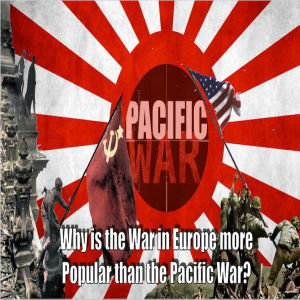
Friday Jun 03, 2022
Friday Jun 03, 2022
This Pacific War Podcast asks why the War in Europe (WW2) is more popular than the Pacific War?
➡️ This Pacific War Podcast will discuss 10 major reasons why the war in Europe is more popular than the Pacific War. There are countless reasons as to why WW2 in Europe seems to overshadow the Pacific War. The War in Europe had more actors and history in general has always been dominated by eurocentrism.
➡️ This Pacific War Podcast will discuss how the terrible brutality of the Pacific War made it difficult to talk about. This brutality was not limited to the combat, but also the disease and starvation felt which led many veterans to not want to talk about the Pacific War. Japanese in general prefer to forget about the event and tend to simply not talk about it.
➡️ This Pacific War Podcast goes into the morality question about the Pacific War vs the war in Europe, the Pacific War after all was an" ugly war". We also talk about how the Pacific War was a Race War. The geography of the Pacific War was confusing and the Europe First Strategy had influence on the publics view of it. Lastly we talk about how the Pacific War reminds many of countless failures.
➡️ The Pacific War Podcast features Craig & Ian
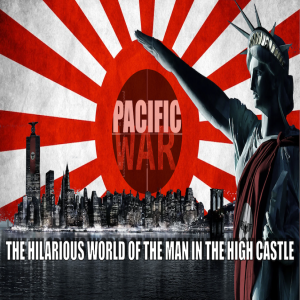
Friday May 13, 2022
Pacific War Podcast 🎙️ The Hilarious world of the Man in the High Castle
Friday May 13, 2022
Friday May 13, 2022
This Pacific War Podcast is about the hilarious world of Man in the high castle
➡️ This Pacific War Podcast will discuss the how the Axis powers won WW2 in the world of the man in the high castle, the hilarious and silly world of man in the high castle TV series and the novel by Philip K Dick and the meaning behind the novel itself.
➡️ This Pacific War Podcast will discuss the key divergent points in the alternate history behind the story of the man in the high castle, what were the most significant historical turning points that created this world. How does this world mirror our own, what about the "other" world inside the man in the high castle, "the grasshopper lies heavy"?
➡️ This Pacific War Podcast compares the man in the high castle TV series with the novel written by Philip K Dick. What are the major differences? What themes remain the same, how does the man in the high castle relate to other novels by Philip K Dick, such as do Androids dream about Electric sheep?
➡️ This Pacific War Podcast will lastly discuss the meaning behind the man in the high castle, its themes, influences and what Philip K Dick was trying to show the reader.
➡️ The Pacific War Podcast features Craig & Eric
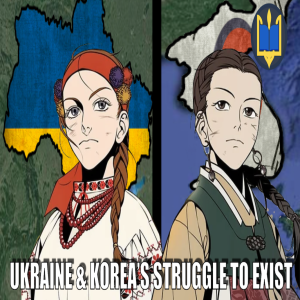
Friday Apr 29, 2022
Friday Apr 29, 2022
This podcast explores how Ukraine and Korea both struggled to exist under the USSR and Empire of Japan as part of #ProjectUkraine
➡️ This podcast explains the tumultuous history of Ukraine during 1917-1923 when the War of Ukrainian Independence occurred. The new Soviet Union, White Russian Army, Poland and Germany all fought to take control over Ukraine. The Central Rada in Kyiv fought a rival Bolshevik government in Kharkov, but ultimately Ukraine was forced to join the Soviet Union as the SSR.
➡️ This podcast explains the tumultuous history of Korea during 1870-1910 when the powers of the Russian Empire, Qing Dynasty and Empire of Japan fought to control the nation. This led to the First Sino-Japanese War of 1894-1895, Russo-Japanese War of 1904-1905 and ultimately the annexation of Korea in 1910.
➡️ This podcast explains the tragic history of Ukraine during 1923-1941 whereupon initial Ukrainization under the Korenizatsiya gradually became Russification under Joseph Stalin. Stalin forced collectivization upon Ukraine, leading to the terrible Holodomor and an attempt to destroy Ukrainian culture, language, identity and its existence as a state.
➡️ This podcast explains the tragic history of Korea during 1910-1941 whereupon the Empire of Japan colonized and exploited Korea. While the Empire of Japan promoted some Korean culture, language and education, this eventually was replaced with rigid assimilation until Korea broke free of Japan at the end of WW2.
➡️ To donate to the Babyn Yar Holocaust Memorial Centre⤵️: https://donation.babynyar.org/en/
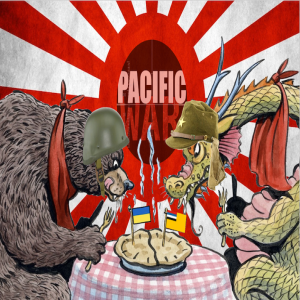
Friday Apr 08, 2022
Pacific War Podcast 🎙️ The Invasion of Ukraine & Manchuria?
Friday Apr 08, 2022
Friday Apr 08, 2022
This Pacific War Podcast is about he invasion of Ukraine and how it compares to the Invasion of Manchuria in 1931
➡️ This Pacific War Podcast will discuss the various reasons as to why Putin invaded Georgia in 2008; why Putin invaded Crimea in 2014 and why Putin invaded Ukraine in 2022. We will explain how this all striking compares to how and why the Empire of Japan invaded Manchuria in 1931 and began the Second Sino-Japanese War of 1937-1945.
➡️ This Pacific War Podcast will discuss the geopolitics of Russia and Ukraine since the collapse of the Soviet Union. What does NATO have to do with all of this? Why is natural Gas the number one key to the entire conflict? How did the struggle for resource security leads nations like the Russian Federation and the Empire of Japan to invade Ukraine and Manchuria?
➡️ This Pacific War Podcast hopes those watching will better educate themselves on the ongoing conflict using multiple sources
➡️ We strongly support Ukraine and hope a peaceful conclusion to the conflict will come soon.
➡️ The Pacific War Podcast features Craig & Justin
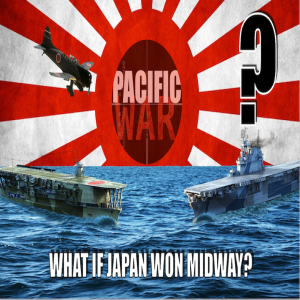
Friday Mar 11, 2022
Pacific War Podcast 🎙️ What if Japan won the battle of Midway?
Friday Mar 11, 2022
Friday Mar 11, 2022
This Pacific War Podcast asks what if Japan won the battle of Midway?
▶️ This Pacific War Podcast will discuss the reasons as to why the Empire of Japan and the United States fought during the battle of Midway. What reasons led the United States to victory over the IJN? What mistakes were made by commanders like Chuichi Nagumo? Why was it such a devastating loss for japan? How much did luck play into the battle?
▶️ This Pacific War Podcast will discuss what could have happened to allow the Japanese to win the battle of Midway. What if Nagumo's dilemma never came to be. What if the US code breakers never broke the Japanese codes. Could the Japanese invade the Midway Atoll? What does a victory at the battle of Midway mean?
▶️ This Pacific War Podcast will discuss what the Pacific War would look like if Japan won the battle of Midway? What happens to the WW2 timetable of events, what events are dramatically changed? Is Hawaii threatened, is Australia, India? How long will WW2 go on for, who will win and what does this mean for global history?
▶️ This Pacific War Podcast is dealing with alternate history and answering many questions presented by the fans of Kings and Generals Pacific War series.
➡️ The Pacific War Podcast features Craig & Ian
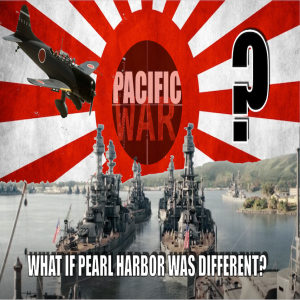
Friday Feb 25, 2022
Pacific War Podcast 🎙️ What if Pearl if Pearl Harbor was different?
Friday Feb 25, 2022
Friday Feb 25, 2022
This Pacific War Podcast asks what if the attack on Pearl Harbor went differently or never happened at all?
➡️ This Pacific War Podcast will discuss the reasons as to why the Empire of Japan attacked Pearl Harbor and how the initial invasion of the Asia-Pacific occurred. Why did Japan attack Pearl Harbor? What was the outcome of the attack on Pearl Harbor? Did the attack complete all of its objectives and what of the third wave question?
➡️ This Pacific War Podcast will discuss what it may have looked like if the attack on Pearl Harbor went differently. What if the attack was even more successful? How would this effect the entire course of the Pacific War? Is it a simply lengthening of the war, or does Japan have a dramatically different edge?
➡️ This Pacific War Podcast will discuss what the Pacific War would look like if Japan did not attack Pearl Harbor? How would this scenario be possible, is it even remotely possible?
➡️ This Pacific War Podcast is dealing with alternate history and answering many questions presented by the fans of Kings and Generals Pacific War series.
➡️ The Pacific War Podcast features Craig & Ian
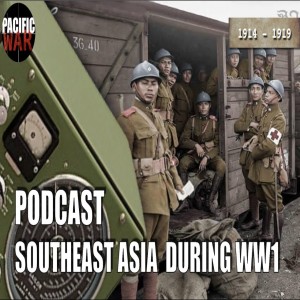
Friday Feb 11, 2022
(Episode + Discussion) 🎙️ Southeast Asia during WW1
Friday Feb 11, 2022
Friday Feb 11, 2022
This Pacific War Podcast is about Southeast Asia during WW1: serving the Entente powers, Thailand, (French Indochina) Cambodia and Vietnam helped win WW1.
▶️ This Pacific War Podcast will discuss how French Indochina entered WW1 on the side of France and sent combat troops and labourers to the western front. This brought forces from Laos, Cambodia and Vietnam to many battles in France and the Balkans. The Kingdom of Siam (Thailand) entered WW1 upon its own accord as it was not a colonized.
▶️ Vietnam sent over 90,000 men to France during WW1 consisting of 5 combat battalions,15 transit battalions, colonial medical staff and colonial labourers.
▶️ Cambodia sent the 21e Bataillon de Tirailleurs Indochinois cambodgiens to the frontlines in France.
▶️ The Kingdom of Siam (Thailand) sent the Siamese expeditionary corps, the Army Air corps, the Army Combat Vehicle Corps and a Medical platoon
▶️ This Pacific War Podcast will answer audience questions such as: what happened to India, Burma, Laos & the Philippines during WW1? What effect did WW1 have on independence movements for southeast Asia? Why was Southeast Asia dragged into WW1?
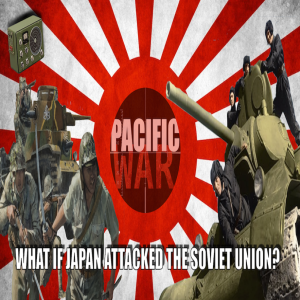
Friday Feb 04, 2022
Pacific War Podcast 🎙️ What if Japan attacked the Soviet Union?
Friday Feb 04, 2022
Friday Feb 04, 2022
This Pacific War Podcast asks what if Japan attacked the Soviet Union during WW2?
➡️ This Pacific War Podcast will discuss the reasons as to why the Empire of Japan did not attack the Soviet Union. What if Japan attacked the Soviet Union, what would have happened? What happens to global history if Japan attacked the Soviet Union? The Pacific War and WW2 in Europe would both be dramatically different given this alternate history what if.
➡️ Hokushin-ron known as the Northern Expansion Doctrine, was Japan's war plan to attack the Soviet Union, but how feasible was it? What political reasons led Japan to not attack the Soviets? Was it the aftermath of the battle of khalkhin gol and battle of lake khasan? Why was Nanshin-ron chosen instead of Hokushin-ron?
➡️ If Japan attacked the Soviet Union what would happen? Would the attack occur during operation Barbarossa? Could the Japanese defeat the Soviet Far East Army? Would Vladivostok be attacked by the IJN? How would the IJA traverse the enormous region of Siberia?
➡️ What happens to global history as we know it if Japan chose to attack the Soviet Union instead of America, Britain and the Dutch? How does the United States react? How would the United States find a way to enter WW2? What happens to WW2? Is there a cold or hot war afterwards?
➡️ The Pacific War Podcast features Craig & Eric
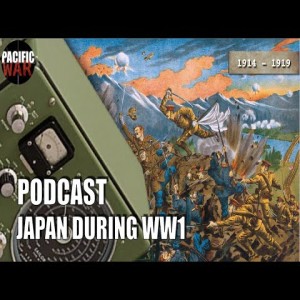
Friday Jan 14, 2022
(Episode + Discussion) 🎙️ Japan during WW1
Friday Jan 14, 2022
Friday Jan 14, 2022
This Pacific War Podcast is about Japan during WW1: as a member of the Entente powers, Japan was one of the greatest victors of WW1.
➡️ This Pacific War Podcast will discuss how Japan entered WW1 on the side of the Entente powers for numerous reasons and would benefit heavily from WW1. Japan would attack and occupy Tsingtao and many German Colonies in the Pacific such as the Marianas, Caroline's, and Marshall Islands.
➡️ Britain would ask for Japan's assistance in WW1 to help hunt down the German East Asia Squadron and defend allied commerce and troopships in the Pacific, Indian and Mediterranean oceans. Britain would also ask Japan to help with the Singapore Sepoy Mutiny.
➡️ The Imperial Japanese Navy fought the German and Austro-Hungarian U-boats in the Mediterranean sea saving countless allied lives.
➡️ Japan and America found themselves allied during WW1 despite their tense relationship. This would heat up further during the Siberian Intervention when multiple nations were sent to help the Russian White Army defeat the Red Army.
➡️ After WW1 ended, Japan was given a seat at the Paris Peace Conference to sign the Treaty of Versailles. Japan would earn recognition as a Great Power, but would be slighted against when they proposed the Racial Equality proposal by the United States and Australia. This would become a major reason for the Japanese Empire beginning the Pacific War.
➡️ The Pacific War Podcast is features Craig, Justin & Eric
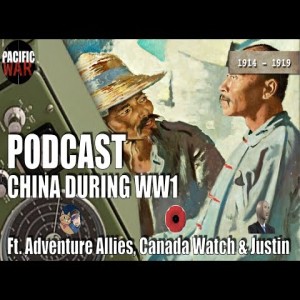
Friday Dec 17, 2021
(Episode + Discussion) 🎙️ China during WW1
Friday Dec 17, 2021
Friday Dec 17, 2021
This Pacific War Podcast is about China during WW1: from serving in the Chinese Labor Corps to fighting during the Siberian intervention and taking a seat at the Treaty of Versailles.
▶️ This Pacific War Podcast will discuss how China may have started as a neutral country during WW1, but it did participate and enter the war eventually. The Chinese Labor corps were a significant part of the war effort for both the western and eastern fronts during WW1. China sent laborers to Britain, France and Russia. China eventually declared war on Germany in 1917.
▶️ During the WW1 time period, China was dealt the humiliating Twenty one demands of Japan and lost Tsingtao (Qingdao) of Shandong province, during the Treaty of Versailles.
▶️ After WW1 concluded, China helped during the Siberian Intervention by sending a military force. Chinese forces also served the Red army in the emerging Soviet Union. China was in a constant period of unrest and turmoil after the Opium Wars and the Boxer Rebellion. None of the new leaders and presidents could really consolidate their power in China and a struggle between the different warlords. broke out. At the same time, China was eyeing a more prominent role within the international community and sent 150,000 workers to the Western Front as part of the Chinese Labor Corps.
➡️ The Pacific War Podcast is featuring Adventure Allies (Let's Play Channel), Canada Watch (Canadian politics Channel) & Just (Economics' major)
